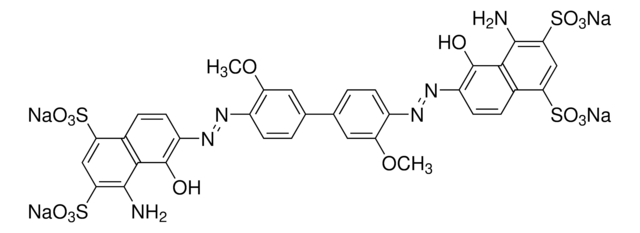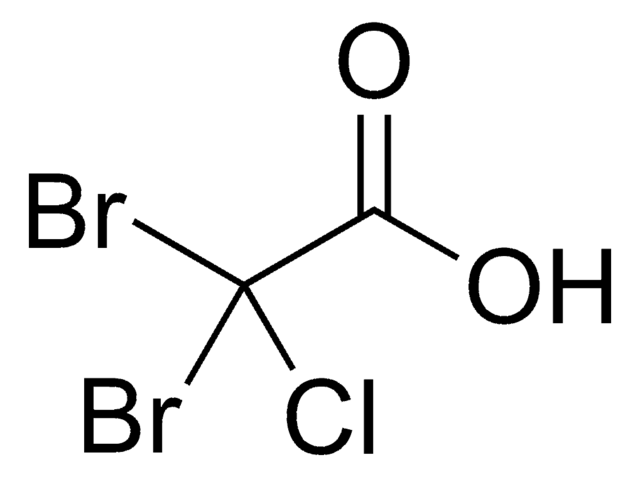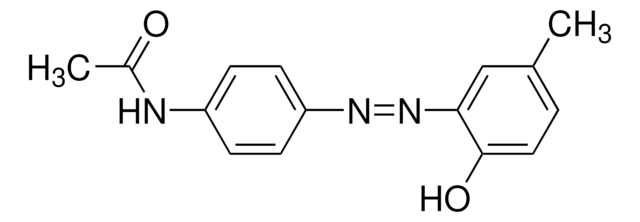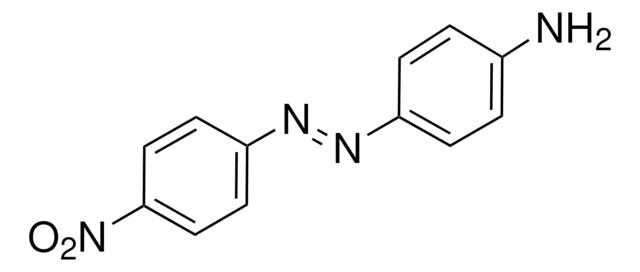Kluczowe dokumenty
C1115
Chrysamine G
≥95% (HPLC), solid
Synonim(y):
4,4′-Bis(3-carboxy-4-hydroxyphenylazo)biphenyl disodium salt
About This Item
Polecane produkty
Próba
≥95% (HPLC)
Formularz
solid
kolor
orange
rozpuszczalność
DMSO: ~4 mg/mL
temp. przechowywania
−20°C
ciąg SMILES
[Na+].[Na+].Oc1ccc(cc1C([O-])=O)N=Nc2ccc(cc2)-c3ccc(cc3)N=Nc4ccc(O)c(c4)C([O-])=O
InChI
1S/C26H18N4O6.2Na/c31-23-11-9-19(13-21(23)25(33)34)29-27-17-5-1-15(2-6-17)16-3-7-18(8-4-16)28-30-20-10-12-24(32)22(14-20)26(35)36;;/h1-14,31-32H,(H,33,34)(H,35,36);;/q;2*+1/p-2
Klucz InChI
AZOPGDOIOXKJRA-UHFFFAOYSA-L
Powiązane kategorie
Opis ogólny
Działania biochem./fizjol.
Kod klasy składowania
11 - Combustible Solids
Klasa zagrożenia wodnego (WGK)
WGK 3
Temperatura zapłonu (°F)
Not applicable
Temperatura zapłonu (°C)
Not applicable
Środki ochrony indywidualnej
Eyeshields, Gloves, type N95 (US)
Wybierz jedną z najnowszych wersji:
Certyfikaty analizy (CoA)
Nie widzisz odpowiedniej wersji?
Jeśli potrzebujesz konkretnej wersji, możesz wyszukać konkretny certyfikat według numeru partii lub serii.
Masz już ten produkt?
Dokumenty związane z niedawno zakupionymi produktami zostały zamieszczone w Bibliotece dokumentów.
Nasz zespół naukowców ma doświadczenie we wszystkich obszarach badań, w tym w naukach przyrodniczych, materiałoznawstwie, syntezie chemicznej, chromatografii, analityce i wielu innych dziedzinach.
Skontaktuj się z zespołem ds. pomocy technicznej







